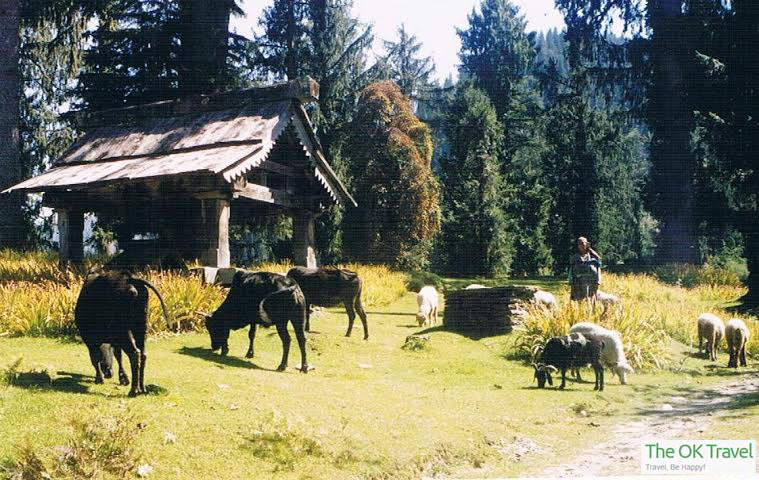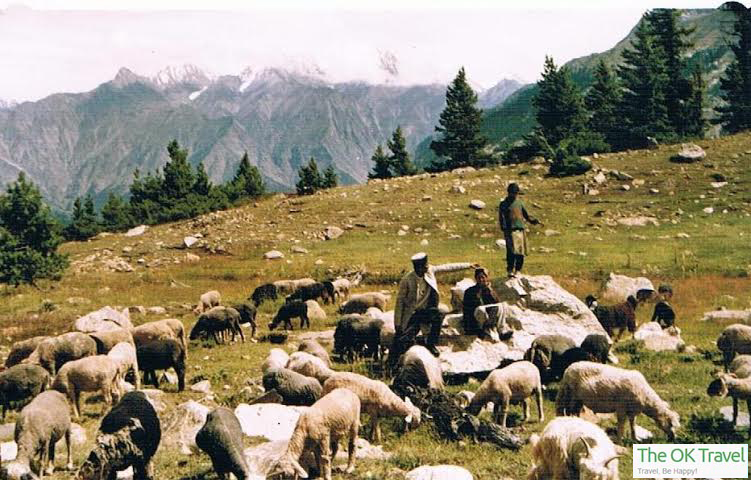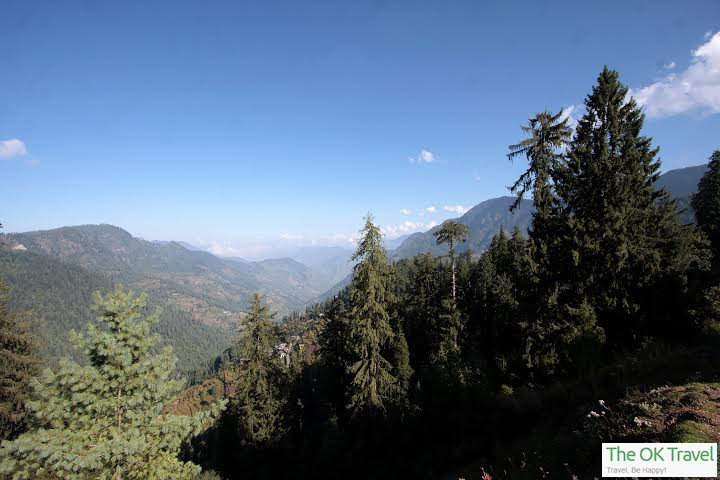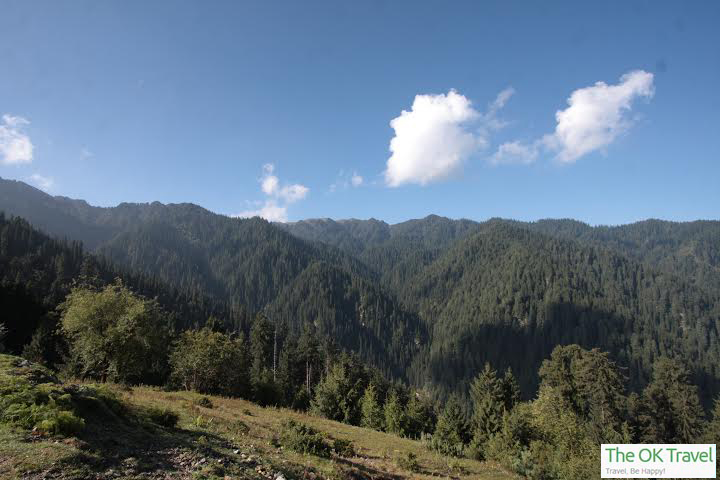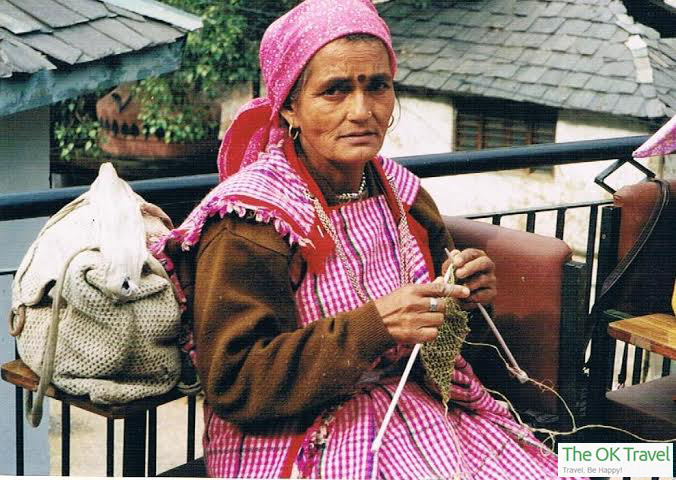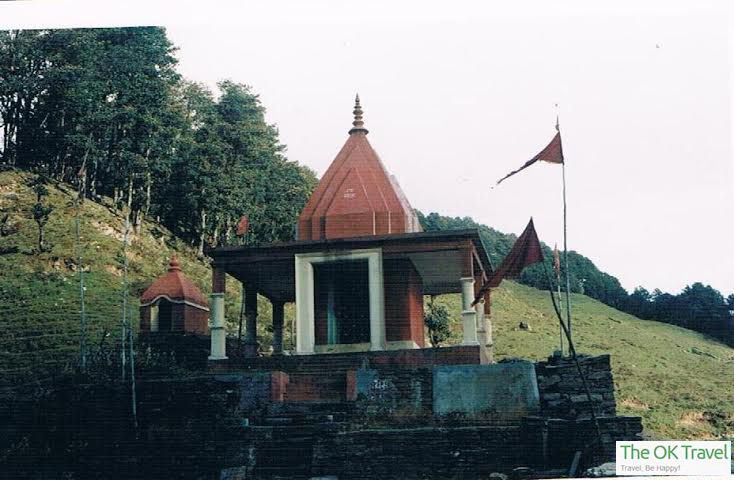
In the sacred lands of Kullu Valley hundreds of sages have meditated and philosophized about the course of life. They spent a significant time in the secluded grooves of the nearby valleys, site which have been marked sacred by the presence of majestic temples built inside beautifully adorned wooden structures.
The locals here use festivals and fairs as a medium to pay homage to these gods and goddesses. They dress them in rich costumes and traditional ornaments, online and prepare lavish feasts for the gods to savor.
During spring, the nearby Seraj Valley also echoes with sounds of drums and trumpets as the locals collect to pay homage to their Gods and Goddesses.

Far from the swarming town of Kullu, the Seraj Valley lays quiet and clam, enclosed by the Parvati Valley and Beas Valley on the north-east side and Sutlej Valley on the south-east. Within this enclosure lie hidden gems of the valley, Sainj and Banjar.
In a gap of 10 days, these two places witness fervent celebrations. First comes the Sainj Fair, held between 4th and 7th May, followed by Banjar Fair, held between 14th and 19th May.
Small processions of local people carry their gods out on a ride in beautifully adorned palanquins. All along they sing and dance to the tunes of songs and hymns of praise, love and respect.
Seeing village folk dressed in colorful traditional attires and singing and dancing their way to offer prayers is a spectacle to behold. They get intoxicated with religious piety, and delight in the little celebrations, which in the remote regions is the only medium of relaxing and enjoying with family and friends.

Both these festivals carry religious worth and help in preserving the native’s belief in divine powers. During Sainj, idol of Devta Laxminarayan is brought from Raila to Sainj, after which the locals indulge in merriment through song, dance and food.
The Banjar fair on the contrary is held in Baggi Vilage of Banjar, and is dedicated to the chief deity of the region, Shringa Rishi. Several other deities also participate in the celebrations. Idol of Shringa Rishi is carried from his original abode, “Skeeran Jot.” The deity is carried barefoot. Dancing devotees starve for penance, and only after the idol is brought to Baggi, do they eat a feast. The main attraction of the fair is the night dance; devotees hold hands in a chain and perform “Seraji Naati,” folk dance of the Banjar region.
Sacred Fairs and festivals also give rural people an opportunity to trade items of utility, inviting business to the otherwise dormant regions of state. While utensils, seasonal foods, spices and clothes are important trade items, local handicrafts of the region are attractions for tourists.
When visiting the valley, it’s not only the festive celebrations that capture one’s imagination. Mired in myth and history, the pristine and untouched Seraj Valley offers ample opportunities for adventure sports – trekking and mountaineering being the most preferred.
Spring time here means, birds chirping gaily, sounds of gushing water from the nearby source of Sutlej, views of terraced fields and plenty of fragrance from blossoming flowers that drape the valley.

Seraj can be reached both from Shimla and Kullu. The highway from Shimla follows a trail through Phagu, Theog and Narkanda, from where you get see panoramic views of the Greater Himalayas. From here the road winds down to River Sutlej and continues to Rampur. As you descend into the valley from a place called Sanj, a road diverts to Lurhi, which heads up to Jalori Pass after passing through Ani.
From Ani, a motorable leads right up to the Jalori Pass. On your way, one can witness the magic created by majestic mountains and deep valleys, a scene straight from the pages of a fairytale come alive.
From here, the next stop is Khanag, famous for a beautiful lonesome bungalow. Open forests, a beautiful lake on the mountain top, all compensate the steep climb you make up to a height of 8000 feet.
Treading onwards, one passes through small hamlets in Banjar, Bandal and Bathad, before reaching the Bashleo Pass. From here, one embarks for Nirmand, which is reached after crossing Goshani, Bathad, and Saharan.

Serious mountaineers can attempt to climb Mt. Srikhand Mahadev Peak at Sarahan, which is 5155 meters (16,912 feet). The peak is revered by the locals and an annual pilgrimage is made to pay obeisance to Lord Shiva, the presiding deity of Srikhand.
Historically, Nirmand was the largest Brahmin village of the region, and know for its intellectuals and cultural wealth. Reaching this landmark is an indication of your being in the inner circles of Seraj.
The wilderness of the Seraj Valley nestles in her lap abundance of warmth and love. Mother Nature has bestowed it with purity of spirit with Gods as its guardian angels. Words can never be enough to describe the story that has seemingly been written from the pen of the Gods.
